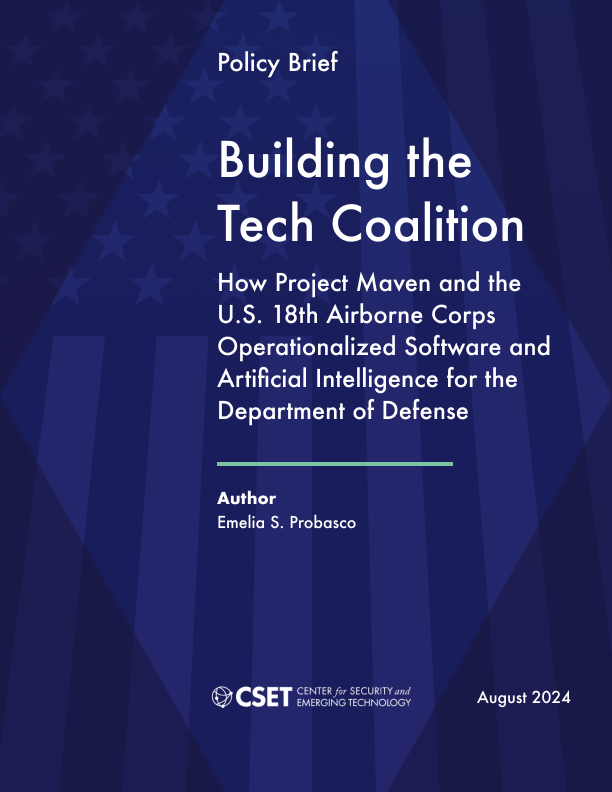There are frequent discussions about how the U.S. military should draw from the commercial technology companies to gain an advantage, especially when it comes to the application of artificial intelligence (AI). Too often, the conversations lament missed opportunities, valleys of death, painful contracting, or other U.S. Department of Defense (DOD) processes. While these hurdles are real, there are also positive stories of instances when commercial tech companies, military leadership, and warfighters came together to create a meaningful advantage on the battlefield. One of these is the story of how the U.S. Army’s 18th Airborne Corps used the Scarlet Dragon Exercise series to develop the Maven Smart System (MSS), an instance where frontline Army users, and a coalition of technology companies—enabled by DOD leadership and policies—pursued and developed a new technology that is having a meaningful impact on operations.
Our case study analyzes what it took to achieve an artillery firing efficiency that equaled the best in recent history with nearly two thousand fewer soldiers. Our lessons learned include:
- Trilingual leaders. MSS’ success for Scarlet Dragon required leaders proficient in the technology, military operations, and acquisition and contracting approaches. Such trilingual leaders leveraged their knowledge of all three areas to cultivate and iterate on workable technical solutions for military challenges.
- Openness to change and partnership. The path to success in this case study was not a straight line. Pentagon leadership began Project Maven focused on intelligence needs. To their credit, those leaders changed direction when they saw the opportunity to improve the artillery fires process through the 18th Airborne Corps and its Scarlet Dragon exercises.
- Rapid iteration. MSS was (and still is) continually evolving to seize new technological advantages and respond to new operational challenges. That continuous evolution is essential to the system’s ongoing utility, but the evolution also requires a structured process, like DevSecOps, to realize rapid, responsible, and sustainable gains.
- Embedded engineering. Embedding engineers and developers with military operators in their everyday work and for wargaming exercises helped to avoid misunderstandings and realize new opportunities in the development of MSS. Developers came to better understand the needs of soldiers and soldiers came to see new opportunities to operate more efficiently.
- Flexible contracting. The common thread among the contracting mechanisms supporting MSS is flexibility. That flexibility enabled experimentation and innovation within the DevSecOps process.
- Barriers to onboarding new vendors. Public network enclaves supported faster onboarding times for new companies looking to contribute to MSS. Streamlined processes also made the business decision for companies to join the effort more straightforward.
These lessons learned and other highlights from the case study point to actions DOD can take to foster future innovations that will have operational impact:
- Recognize and reward senior leaders who clear hurdles and enable innovators. Senior leaders are needed to continue to clear administrative and bureaucratic hurdles for working-level innovators.
- Support the development of trilingual leaders. Invest in officer training and career pipelines that include operations, acquisition, and technical skills.
- Build technical and contractual relationships that allow for changes of direction, rapid iteration, and the adoption of new technologies. These relationships can be supported by DevSecOps software development methods. Relationships can also be developed through strong connections between embedded engineers and operating forces. All of this is underpinned by technical and contractual infrastructure that the Chief Digital and AI Office (CDAO) and National Geospatial-Intelligence Agency (NGA) are supporting.
- Support business contributions and continuity by signposting long-term commitment to projects, faster contracting, and continuing to lower barriers to companies seeking to provide solutions. Cutting-edge tech companies are essential partners to the rapid adoption of the latest technologies. While these companies are willing to take financial risks to fulfill a mission or tackle a challenging problem, they are still businesses and must at least see a realistic potential for financial success to stay viable.
